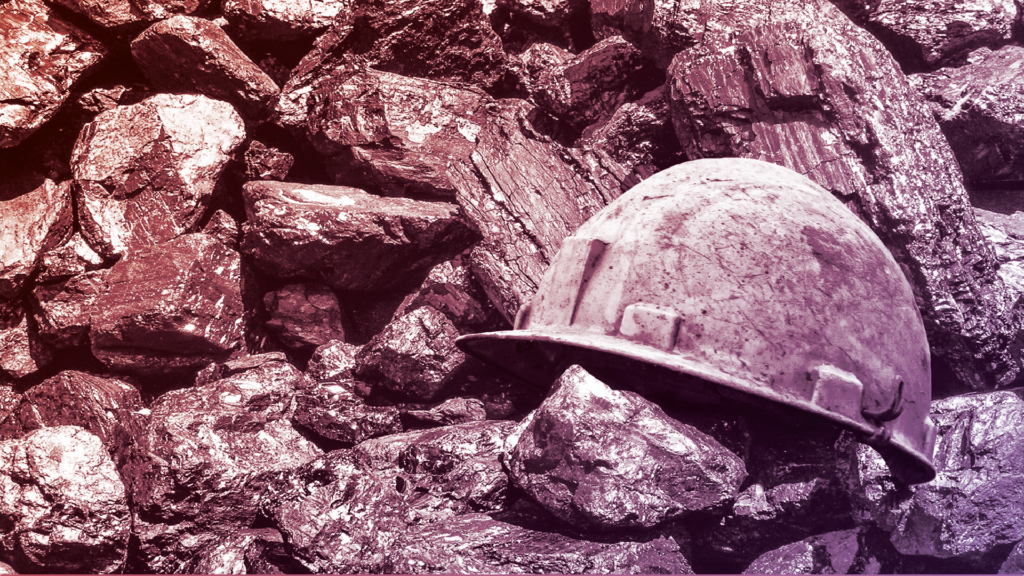
http://o.canada.com/news/national/dying-to-be-heard-should-inquests-be-mandatory-for-all-workplace-deaths/
Dying to be heard: Should inquests be mandatory for all workplace deaths?
No consistency across Canada when deciding which workplace fatalities merit an inquest or inquiry
If a construction worker or miner is killed on the job in Ontario, that death automatically triggers a coroner’s inquest. This is not the case in most other provinces.
When three farmworkers were killed in 2007 in an overloaded 15-passenger van in British Columbia, the case prompted a coroner’s inquest. But no inquest was held into the deaths in 2012 of 10 Peruvian migrant workers in a van crash in Ontario.
While there were massive fines laid in the deaths in 2007 of two Chinese migrant workers following a roof collapse at an oil field in northern Alberta, there was no public inquiry.
There is no consistency across Canada when deciding which workplace fatalities merit an inquest or inquiry, a Postmedia News investigation found. Worker safety advocates say details of all workplace fatalities, no matter the sector, deserve to be aired in a public forum.
“I believe not enough is being done to examine the trends, patterns, causes of industrial fatalities because of the fact that industrial inquests are not mandatory. If they were, so much could be learned,” said Nancy Hutchison, secretary treasurer of the Ontario Federation of Labour and former national director of health safety at the United Steel Workers.
“So much can be learned from the process and circumstances that led up to a fatality. There are always triggers or warning signs or similar ‘close calls’ or ‘near misses’ that should have been an indication that something is very wrong. Often evidence comes out that there was a pattern, or that workers had attempted to deal with and address a particular situation prior to the death of a worker.”
Inquests also provide an opportunity to highlight the need for legislation, or lack of enforcement of existing laws, she said.
Ontario is one of the few provinces that makes inquests mandatory in all construction- and mining-related fatalities. Yet critics say that doesn’t go far enough.
Worker advocates in Ontario were outraged last February when the coroner’s office announced it would not be holding an inquest into the van crash that killed the 10 Peruvian migrants. As the crash was the result of driver error, holding an inquest would not likely yield recommendations for preventing future deaths, the office said.
But some said an inquest was needed to expose lack of regulations in the agricultural sector and challenges facing temporary farm workers. The advocacy group Justicia for Migrant Workers wrote an open letter to Ontario Premier Kathleen Wynne, saying the refusal by the province to hold an inquest sent a message “that the lives of those who perished – most of whom were migrant workers – matter less than those of other workers.”
Provincial officials wrote back outlining ways in which the province protects workers, including migrant workers.
Meanwhile, the Ontario Human Rights Tribunal is expected to rule soon on a complaint from the family of Ned Peart, a Jamaican migrant worker killed in 2002 when a tobacco bin fell and crushed him on a farm near Brantford. Despite pleas for a coroner’s inquest, none was held.
His family says mandatory inquests for construction workers and miners, but not for other workers, is a violation of Ontario’s human rights code.
While advocates demand mandatory inquests for all industrial and workplace accidents, families who have been through inquests await action on key recommendations.
Underground mines
On the night of Aug. 20, 2008, Justin Rogers was working alone as a skip tender in an underground loading pocket at the Canada Talc mine in Madoc, Ont.
He had been on the job only seven weeks.
According to the coroner’s report, at about 1 a.m., the hoist operator was alerted to a series of erratic bells and buzzers. A video camera showed an overflow of ore into the shaft.
Another underground miner was dispatched to check on Rogers. The loading pocket was covered in a “run of muck” – the uncontrolled release of water, broken rock, sand and ore – estimated at six to eight feet deep and with the consistency of unhardened cement.
It took four hours before miners were able to recover Rogers’s body. He would become part of a staggering tally of workplace deaths in underground mines in Ontario – 30 over the past decade, according to the ministry of labour.
An inquest into the accident took place in 2011. After listening to 12 days of testimony, jurors issued 21 recommendations directed at Ontario’s ministry of labour.
Under the heading “immediate action,” the jury said the ministry should conduct a safety “blitz” of all loading pockets in underground mines and conduct an audit of all “run of muck” incidents in order to identify hazards.
Ten of the recommendations were directed at the ministry’s mining legislative review committee, which advises the minister on mining-related health and safety issues.
The jury called on the committee to develop regulations to protect workers from being in the direct path of a potential “run of muck” and to consider minimum standards for emergency exits and beefed-up training for workers. It also suggested the committee review the issue of working alone in underground mines.
Hutchison, who spent 19 years in the mining industry herself and testified at the inquest, said the recommendations were “common sense” and praised the jury for its thoroughness. The “holy grail of prevention is right here,” she said of the inquest recommendations.
Yet more than two years later, few of the recommendations have been acted upon.
In late 2012, ministry of labour inspectors did conduct a blitz of underground mines with a focus on ore passes and loading pockets. The blitz uncovered “a number of deficiencies involving ore transfer systems” that could result in serious or fatal injuries, the ministry reported on its website.
The ministry also reported that between 2002 and 2011 there were 56 incidents of “wet dangerous material moving uncontrollably through ore transfer points.”
But the mining legislative review committee has yet to consider any of the recommendations calling for new regulations. Tom Zach, a ministry spokesman, said the committee is to review them later this month.
The ministry also announced in December that it was launching a province-wide mining safety review.
On the day Hutchison testified at the inquest into Rogers’s death, she got an alert on her BlackBerry that two more mining workers had died in a “run of muck” accident at Vale’s Stobie Mine in Sudbury.
“History keeps repeating itself. In my view, it doesn’t have to,” Hutchison said.
Hard hats
Another issue highlighted in at least four inquests in Ontario going back to 1999 is the lack of mandatory chinstraps on the hard hats that construction workers wear. Chinstraps are key to keeping hard hats on if a worker falls.
The death of Kyle Sharp in July 2003 triggered such a call. Sharp, described as “energetic and eager to prove himself to his supervisors,” was an ironworker on the construction of a shopping mall complex in London, Ont.
He fell 25 feet while attempting to walk across a beam and died from blunt-force trauma to the head. The inquest jury’s verdict noted that even though all workers were wearing hard hats, “in this situation, the helmet fell off during the fall.”
Zach, the labour ministry spokesman, said while current regulations do not mandate chinstraps on hard hats, inquest recommendations continue to be reviewed.
Mushroom farm deaths
Meanwhile, worker safety advocates in B.C. continue to press for changes five years after three workers died at a Langley mushroom farm.
The workers were overcome by the release of toxic hydrogen sulfide gas in a composting shed at the farm while they tried to unclog a pipe. Two other workers suffered permanent and severe brain damage.
An inquest wrapped up in May 2012 but several recommendations have not been heeded:
–The inquest jury recommended that WorkSafe BC amend occupational health and safety regulations to require that every new agricultural worker and manager complete a training course on health and safety within their first month in the industry and that every existing worker and manager complete the training course within two years.
Roberta Ellis, WorkSafe BC’s vice-president of corporate services and human resources, said the training requirements are still under discussion. Parties need to assess what might be included in the curriculum, she said.
–The jury recommended that Worksafe BC require annual reporting by employers confirming their compliance with occupational health and safety regulations.
Requiring employers to confirm annually in writing their compliance with health and safety regulations poses legal and enforcement “challenges,” Ellis said. However, WorkSafe BC is looking at ways that it might meet the “spirit” of the recommendation, such as by translating the rights and responsibilities of employers, supervisors and workers into seven different languages.
–The jury recommended annual reporting by employers identifying all confined spaces on their premises and their plans for minimizing risks.
WorkSafe BC rejected this recommendation, Ellis said, because worksite spaces are constantly in flux and it would be difficult to send an accurate inventory. That said, WorkSafe BC is developing a website promoting best practices for working in confined spaces and has increased the number of agriculture safety inspectors.
Nina Hansen, director of health and safety with the BC Federation of Labour, said agencies’ proposed alternatives to jury recommendations are often just “cop outs.”
“There’s no pressure on the agency to do anything different,” she said.
Tracey Phan, 17, whose father Michael Phan suffered permanent brain damage from the gas exposure, said the wait for an inquest took so long, she kept her expectations low that recommendations would be acted upon.
“There’s not that much pressure pushed on the agencies,” she said.
“They should take responsibility and try their best to prevent it from happening again (by following recommendations).”
Farm work
Work safety advocates in Alberta say they, too, have encountered frustrations getting the province to act on a key recommendation from a fatality inquiry held in 2008.
Kevan Chandler, 35, was an employee at a feedlot, Tongue Creek Feeders. He went into a silo to clean out some grain that was stuck to the interior walls of the silo. When he attempted to knock down the grain, it collapsed on him, smothering him.
Provincial court Judge Peter Barley, who presided over the inquiry, wrote in his final report that all paid employees on farms should be covered by the province’s occupational health and safety act. “No logical explanation was given as to why paid employees on a farm are not covered by the same workplace legislation as non-farm employees,” the judge wrote.
Such coverage would mean better record keeping about possible hazards, which could then be passed on to farmworkers, the inquiry heard.
Yet, more than five years later, the province is still reluctant to include farmworkers in the act.
Brookes Merritt, a spokesman for Alberta Human Services, said Human Services Minister Dave Hancock continues to meet with agriculture officials to “determine the most effective combination of education, prevention and regulation needed to help keep paid agricultural workers safe.”
dquan@postmedia.com


